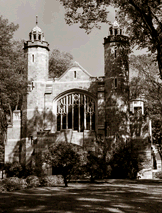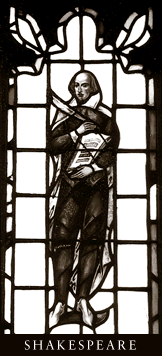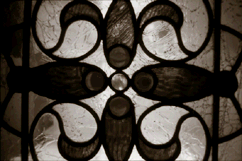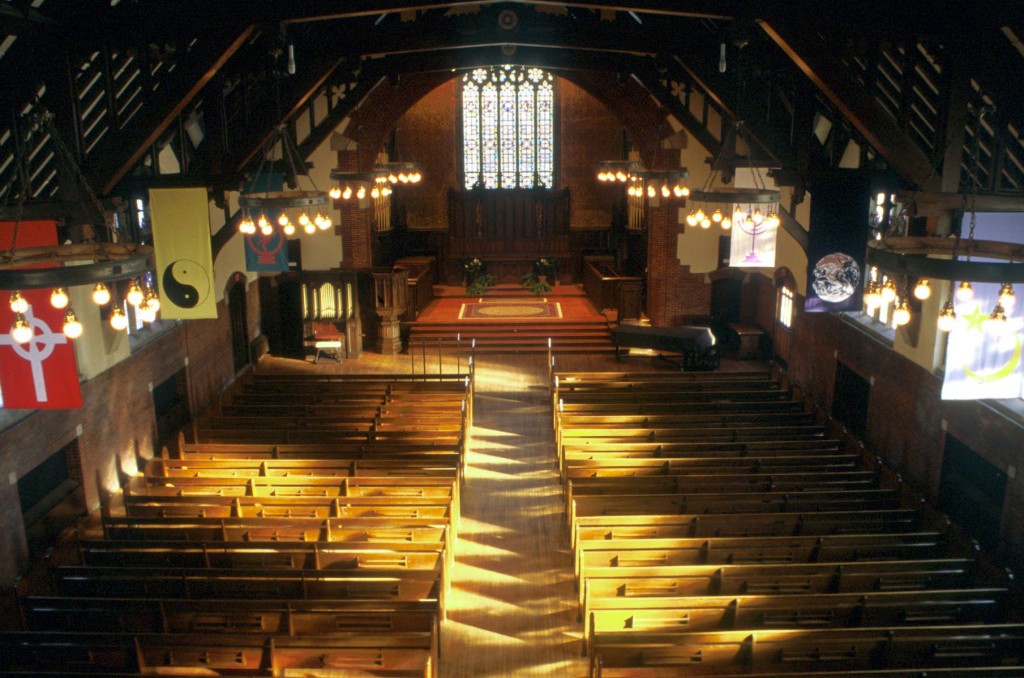The Peter J. Gomes Chapel
275 College Street, Lewiston, ME
Introduction
The Peter J. Gomes Chapel is a house of prayer and meditation open to all on the Bates campus. Whatever your religious affiliation, you are always welcome to enjoy a few moments of solitude and serenity in the beauty of the Gomes Chapel. Members of the Bates community can scan an ID to enter from the door facing the Quad (nearest to Campus Ave.) and from the door facing College St. (nearest to Parker Hall; this door is also an accessible entrance). In addition to being a center for some campus religious services, the Gomes Chapel is also regularly used for concerts, lectures, and performances.
Chapel Community Hours
The Peter J. Gomes Chapel is a beloved landmark and contemplative space for the community surrounding Bates College. To continue the longstanding tradition of opening the Chapel to the local community, the doors will be unlocked and staff will be present during these hours:
- Mondays 2:00pm – 4:00pm
- Thursdays 9:00am – 11:00am
Weddings and Chapel Use
Click here for wedding inquiries or other questions about Chapel use.
For more information about the Peter J. Gomes Chapel, email multifaithchaplaincy@bates.edu
Chapel History

Though it was built in 1913, the Peter J. Gomes Chapel remains to this day one of the most architecturally interesting buildings on campus. Financed by Mrs. D. Willis James and dedicated on the eve of World War I, the Gomes Chapel’s design came from the Boston firm of Coolidge and Carlson, but the inspiration for its Gothic construction came from the King’s College Chapel at Cambridge University, which was built in the fifteenth century by Henry Vl. The structure is English Collegiate Gothic in style, and the seam-faced Quincy granite used in its construction gives the building its distinctive light coloring. Two aspects of the exterior are particularly interesting: the porch entrance based on the Galilee Porch of a cathedral in Durham, England, and the Tudor arches, which add to the basic Gothic style of the rest of the building.
The interior walls are tan with red brick wainscoting, the pews and floors are of wood, and the ceiling is crossed by heavy beams. The wood motif continues in the Chancel with the fumed oak choir stalls, pulpit, lectern, and altar. The reredos contains figures of St. Augustine and Thomas Aquinas, and on the ceilings above the choir stalls appear the twelve apostles. The most striking aspect of the chancel is the stained glass windows portraying Christ as the Lamb of God with Matthew, Mark, Luke, and John on the sides. Charles Connick of Boston designed the window; the apostles were painted by Harry H. Cochraine, M.A. ’14. The Gomes Chapel continues to be used regularly for worship, lectures, musical events, weddings, and other special events for the College and the surrounding community.
Banners
Hanging from rafters around the perimeter of the Gomes Chapel interior, creating a sense of religious community within, are seven banners, each displaying symbols of major world religions: the Iroguois Great Tree of Peace for Native American traditions, the eight-spoked wheel of Dharma, the Celtic Cross of Christianity, Yin-Yang of Chinese philosophy, Shiva dancing in a ring of fire for Hinduism, the crescent moon and star of Islam, and the seven-branched menorah of Judaism. An eighth banner shows the planet Earth, reminding us of the world’s humanity and the larger community of life.
The banners were originally designed for a Spirit and Nature symposium at Middlebury College in 1990. In 1997, the Bates College Chaplain commissioned the artist, Carol E.S. MacDonald, to re-create them for permanent display in the Chapel.
Stained Glass Windows

In keeping with the College’s motto “Amore ac Studio” (“Love of Study”) the stained glass windows that line the nave contain mostly secular figures whose scholarly and artistic contributions to culture have endured the test of time. They were chosen in the mid-1930s by a faculty committee headed by President Clifton D. Gray. Arranged chronologically, the windows portray the progress of Western culture from Ancient, Medieval, and Renaissance to modern times as one walks from the chancel to the entryway.
The central figure of the Ancient window on the left as one faces the nave is that of Aristotle. This great scientist and philosopher is flanked by the poets Virgil and Homer. The group of ancients on the right does homage to Plato, its central figure, Phidias, the Greek artist, and Euclid, holding the triangle which represents his most famous theorem.

In the Medieval windows, next on the left, we find Peter Abelard, prominent educator and theologian, and Roger Bacon holding his best-known work, The Opus Majus. Fra Angelico, painter-friar, is in the Medieval group on the right with Dante, chosen because of his contribution to literature.
Representing the Renaissance, on the left, Leonardo da Vinci stands with theologian Martin Luther and Desiderius Erasmus, Dutch scholar and publicist. On the right, William Shakespeare stands with Nicolaus Copernicus, Polish astronomer, and Hugo Grotius, Dutch statesman.
The Modem windows on the left portray scientist Marie Curie and poet Johann Wolfgang von Goethe. On the opposite side, right, are the English scientist and philosopher, Isaac Newton, and composer
The Organ
The organ located in the rear gallery is the third instrument to occupy the Gomes Chapel. It was installed in 1982, replacing the Esty organ, which underwent a major restoration in 1953. The present organ was built by Hellmuth Wolff of Laval, Canada, and its Renaissance-style case of stained white oak was inspired by the organ in St. Geroen, Cologne. The pipeshades, of hand-carved butternut wood, reflect some of the wood carvings found elsewhere in the Chapel.
The organ is a thirty-six-stop, mechanical-action instrument of eclectic design. The pipes in the facade are speaking pipes, made of an alloy of tin and lead.
The small organ at the left of the pulpit was built by Henry Erben in 1850. Erben was the finest of the mid-nineteenth century American organ builders.
Peter J. Gomes
On Oct. 25, 2012, the Chapel was named for the Rev. Professor Peter J. Gomes ’65, D.D. ’96 (1942-2011). As an undergraduate, Gomes was close to Chapel life. He served as organist, choirmaster and minister to peers. Throughout his distinguished Harvard University career as one of America’s most respected preachers and as one of his generation’s most astute interpreters of the Christian life, Gomes often returned to his beloved Chapel. He took satisfaction from his participation in the legacy of hope expressed by President Chase at the laying of the cornerstone: that the Chapel “remain through the centuries…the cherished place where successive generations of Bates students shall hold sacred communion with their God.”
Notes: Much of the historical material in this summary comes from the Fall ’71 Bates Alumnus article “So Great a Cloud of Witnesses,” by the late Professor Robert G. Berkelrnan. The original pamphlet was written by Peri Flynn ’82 and revised by Tim Green ’94. The information about the organ comes from Professor of Music Marion Anderson. The information about Peter J. Gomes comes from the 2012 Peter J. Gomes Chapel brochure, “Common ground for uncommon pursuits,” written by Carl Benton Straub, Professor Emeritus of Religion and the Clark A. Griffith Professor Emeritus of Environmental Studies.
